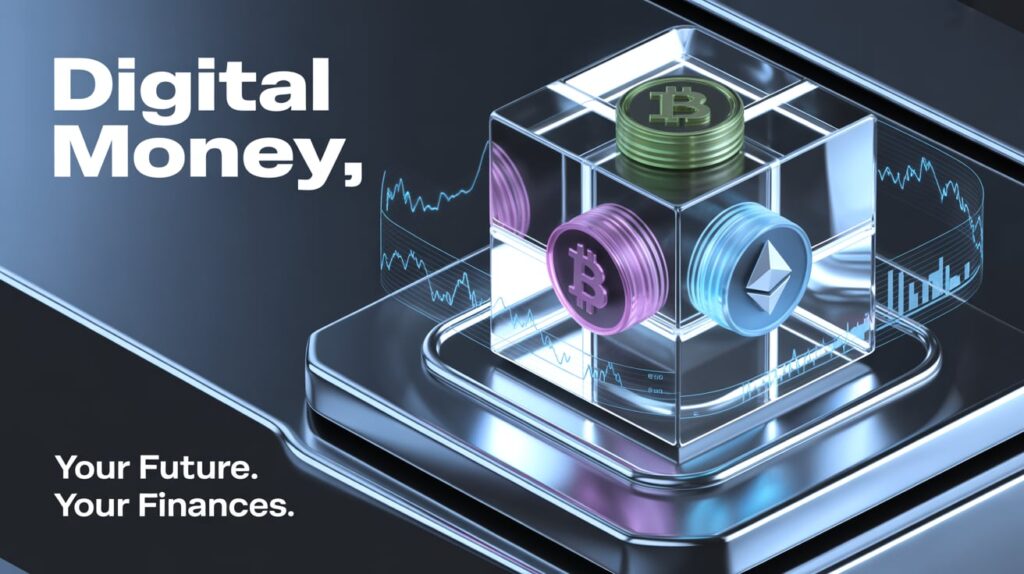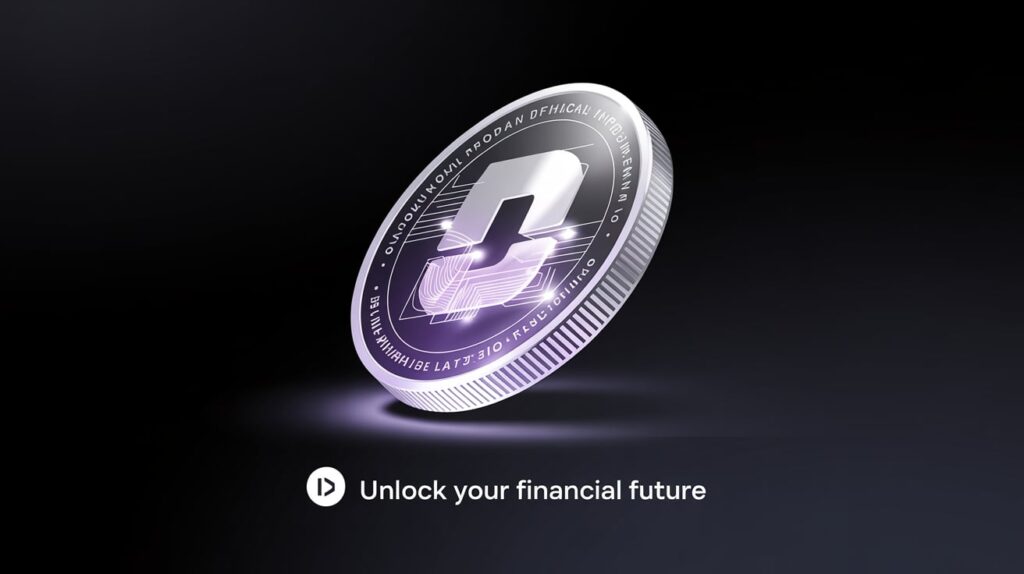In today’s fast-paced digital economy, money is no longer just physical cash or coins—it exists in digital form, revolutionizing how we transact, save, and invest. From online banking to cryptocurrencies like Bitcoin, digital money is reshaping the financial landscape.
But what exactly is digital money? How does it work, and what are its advantages and risks? In this comprehensive guide, we’ll explore the concept of digital money, its different forms, how it compares to traditional currency, and what the future holds for this financial innovation.
1. What Is Digital Money?
Digital money (or electronic money) refers to any form of currency that exists purely in digital form, without a physical counterpart like banknotes or coins. It is stored, transferred, and managed electronically through digital payment systems, blockchain networks, or centralized databases.
Unlike physical cash, digital money relies on technology—such as computers, smartphones, and the internet—to facilitate transactions. It includes everything from bank account balances and mobile payment apps to cryptocurrencies and central bank digital currencies (CBDCs).
2. Types of Digital Money
Digital money comes in various forms, each serving different purposes. Here are the most common types:
ALSO CHECK: Top 3 Best Plugins for Your Website in 2025 (Must-Have Tools for Speed, Security & SEO)
A. Central Bank Digital Currencies (CBDCs)
CBDCs are digital versions of a country’s official currency, issued and regulated by central banks. Unlike decentralized cryptocurrencies, CBDCs are government-backed and aim to improve payment efficiency, reduce fraud, and enhance monetary policy control.
Examples:
- Digital Yuan (China)
- Digital Euro (European Central Bank pilot)
- e-Naira (Nigeria)

B. Cryptocurrencies
Cryptocurrencies are decentralized digital currencies that use blockchain technology to enable peer-to-peer transactions without intermediaries like banks. They operate on cryptographic principles, ensuring security and transparency.
Examples:
- Bitcoin (BTC) – The first and most well-known cryptocurrency.
- Ethereum (ETH) – Supports smart contracts and decentralized apps (DApps).
- Stablecoins (USDT, USDC) – Pegged to fiat currencies to reduce volatility.
C. Digital Wallets & Mobile Payments
Digital wallets (e-wallets) store payment information and allow users to make transactions via smartphones or computers. They are widely used for online shopping, peer-to-peer transfers, and contactless payments.
Examples:
- PayPal
- Apple Pay & Google Pay
- Venmo & Cash App
D. Online Banking & Electronic Transfers
Traditional banks also operate digitally, allowing customers to manage money through online banking, wire transfers, and debit/credit card transactions.
Examples:
- SWIFT transfers (international bank transactions)
- ACH payments (direct deposits & bill payments)
3. How Does Digital Money Work?
Digital money operates through secure digital networks, ensuring fast and efficient transactions. Here’s how different forms function:
A. Blockchain-Based Digital Money (Cryptocurrencies)
- Transactions are recorded on a decentralized ledger (blockchain).
- Users store funds in digital wallets with private keys.
- No central authority controls the network (decentralized).
B. Bank-Issued Digital Money (CBDCs & Online Banking)
- Centralized systems managed by banks or governments.
- Transactions are processed through secure banking networks.
- Regulated by financial authorities for stability.
C. Digital Wallets & Payment Apps
- Link to bank accounts or cards for instant transfers.
- Use encryption and tokenization for security.
- Enable QR code, NFC, or online payments.
4. Advantages of Digital Money
✅ Faster & More Efficient Transactions
- Digital payments settle instantly, unlike traditional bank transfers that can take days.
- Cross-border transactions are cheaper and quicker (e.g., Bitcoin vs. SWIFT).
✅ Lower Costs
- Reduces the need for physical cash handling, printing, and storage.
- Fewer intermediaries mean lower fees (especially with cryptocurrencies).
✅ Enhanced Security
- Encryption and blockchain reduce fraud risks.
- Digital wallets use biometric authentication (fingerprint, face ID).
✅ Financial Inclusion
- Unbanked populations can access financial services via mobile payments.
- Cryptocurrencies provide an alternative in unstable economies.
✅ Programmability (Smart Contracts & DeFi)
- Ethereum and other blockchains enable automated financial agreements.
- Decentralized finance (DeFi) offers lending, staking, and yield farming without banks.

5. Risks & Challenges of Digital Money
Despite its benefits, digital money comes with risks:
❌ Cybersecurity Threats
- Hacking, phishing, and scams target digital wallets and exchanges.
- Loss of private keys = permanent loss of crypto funds.
❌ Regulatory Uncertainty
- Governments are still figuring out how to regulate cryptocurrencies.
- Some countries ban or restrict digital currencies (e.g., China’s crypto ban).
❌ Volatility (Cryptocurrencies)
- Bitcoin and altcoins experience extreme price swings.
- Stablecoins aim to reduce volatility but rely on trust in issuers.
❌ Privacy Concerns
- CBDCs could enable government surveillance of transactions.
- Some cryptocurrencies (like Monero) prioritize privacy, raising regulatory concerns.
❌ Dependency on Technology
- Power outages or internet disruptions can halt digital transactions.
- Not everyone has access to smartphones or banking infrastructure.
6. Digital Money vs. Traditional Cash
| Feature | Digital Money | Physical Cash |
|---|---|---|
| Form | Electronic | Paper/coins |
| Transaction Speed | Instant | Slower (requires handling) |
| Security | Encrypted, traceable | Easier to steal/lose |
| Accessibility | Requires tech/internet | Universally accepted |
| Regulation | Varies (CBDCs vs. crypto) | Fully regulated |
While digital money offers convenience, cash remains essential in some economies and for privacy-focused transactions.
7. The Future of Digital Money
The shift toward digital money is accelerating, with key trends shaping its future:
📌 Wider Adoption of CBDCs
- More countries are exploring national digital currencies for economic control.
📌 Growth of Cryptocurrencies & DeFi
- Bitcoin ETFs, institutional investments, and blockchain innovations are expanding crypto’s role in finance.
📌 Integration with AI & IoT
- Smart devices could autonomously make micropayments (e.g., self-driving cars paying for tolls).
📌 Enhanced Privacy Solutions
- Zero-knowledge proofs (ZKPs) and privacy coins may balance anonymity with regulation.
📌 Decline of Physical Cash
- Sweden and other nations are moving toward cashless societies.

8. How to Safely Use Digital Money
To protect yourself while using digital money:
- Use strong passwords & 2FA for wallets and banking apps.
- Avoid sharing private keys (for crypto wallets).
- Verify transactions before approving (phishing scams are common).
- Diversify storage (cold wallets for crypto, trusted banks for CBDCs).
Conclusion: The Digital Money Revolution
Digital money is transforming finance, offering speed, efficiency, and innovation—but it also brings new risks. Whether through CBDCs, cryptocurrencies, or mobile payments, the way we handle money is evolving rapidly.
As digital currencies become mainstream, understanding how they work and how to use them safely will be crucial. The future of money is digital, and those who adapt will benefit from its convenience, security, and global accessibility.
Are you ready for the cashless future? 💳🚀


1 thought on “What Is Digital Money? A Complete Guide”